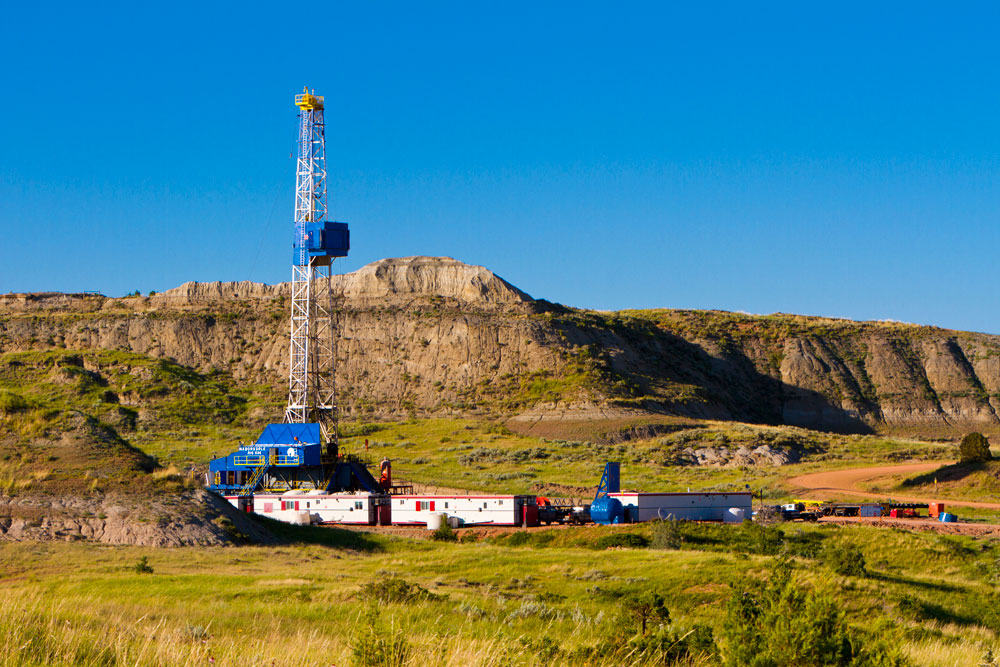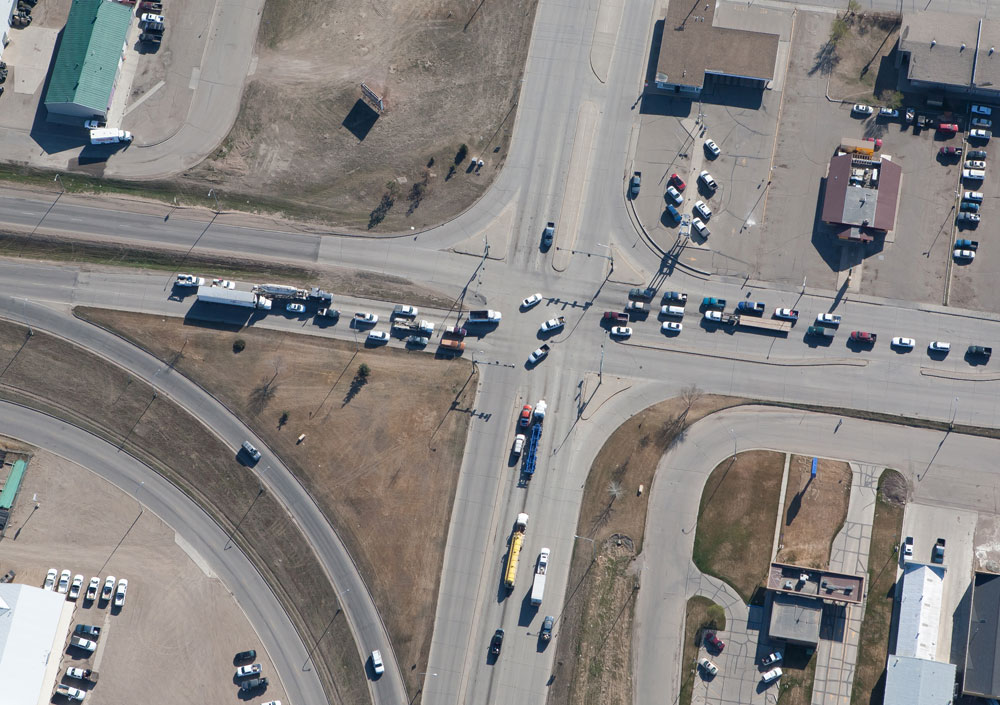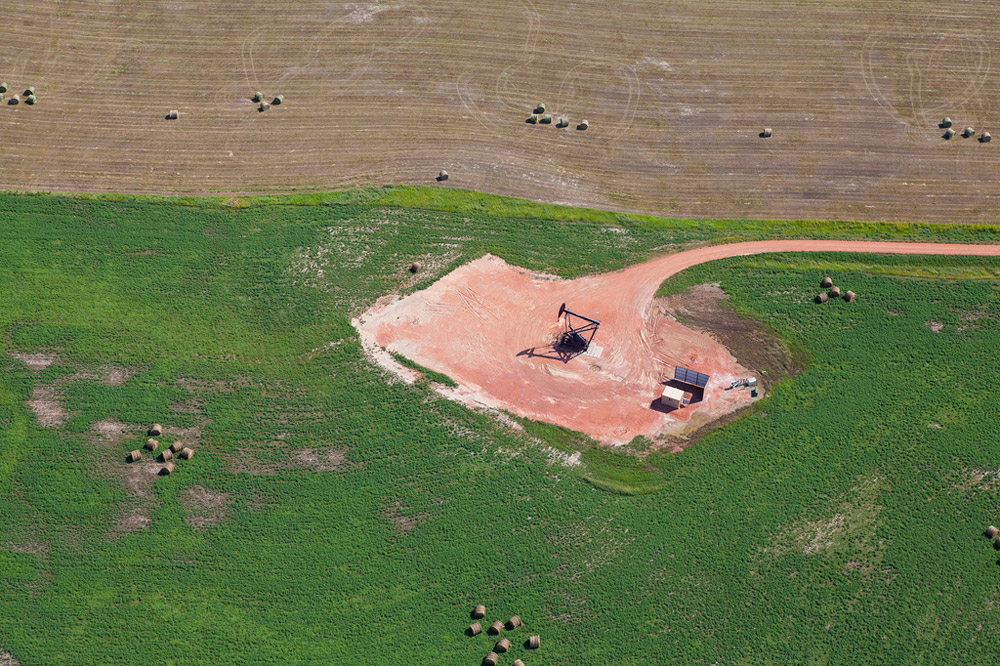
Bakken Pumpjack Aerial: An aerial view of a pumpjack in Western North Dakota. Photo courtesy of Marathon Oil.
- 35% of the energy used in the United States is from petroleum.
- North Dakota is the third leading oil-producing state in the nation, producing 10 percent of all U.S. oil.
- North Dakota reached the milestone of 1 million barrels per day in June 2014.
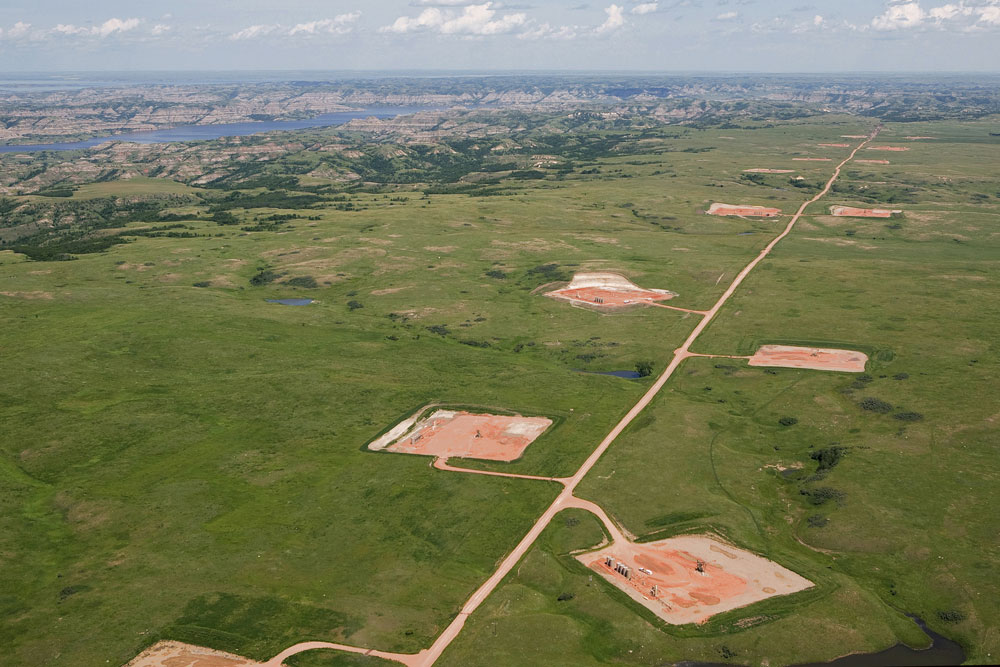
Multiple Well Pads: North Dakota Department of Mineral Resources has developers plan well sites along a corridor to disturb as little land as possible. See a stretch of well pads off a single road in this aerial shot. Photo courtesy of Vern Whitten Photography.
- A typical Bakken well drilled today may produce for 45 years.
- During that time, it could generate about $20 million net profit; pay approximately $5,000,000 in taxes, and pay $7,800,000 to the mineral owners.
- North Dakotans benefit in many ways from oil and gas production in the state.
- Homes, schools, and businesses are heated with natural gas.
- North Dakotans use petroleum-based products in all phases of everyday life.
- Each barrel (42 gallons) of petroleum can make about 19 ½ gallons of gasoline.
- Over half of the remaining petroleum is used to make other products.
Mandan Refinery: Mandan’s refinery began operations in 1954. This two-minute video clip describes how the Bakken oil boom affected refinery operations. Video courtesy of Marathon Petroleum.
- Because of the oil and gas industry, the economy of North Dakota is boomed between 2008 and 2015.
- North Dakota was the fastest growing economy of any state in the United States.
- The economy of North Dakota increased at five times the national average in 2012.
- Many states were deeply in debt at the time; however, the state of North Dakota had a one billion dollar ($1,000,000,000) budget surplus.
- A typical Bakken oil well will produce for more than 30 years.
- Costs over $7,000,000 to drill and complete.
- Produces 1,170,683 barrels of oil.
- Makes about $31 million ($31,000,000,000) in profit.
- Pays over $5,000,000 in taxes.
- Money earned through oil taxes went into the state Legacy Fund, which totaled $4 billion ($4,000,000,000) in 2017. Certain restrictions limit the spending of these funds.
- A typical Bakken oil well will produce for more than 30 years.
- North Dakota was the fastest growing economy of any state in the United States.
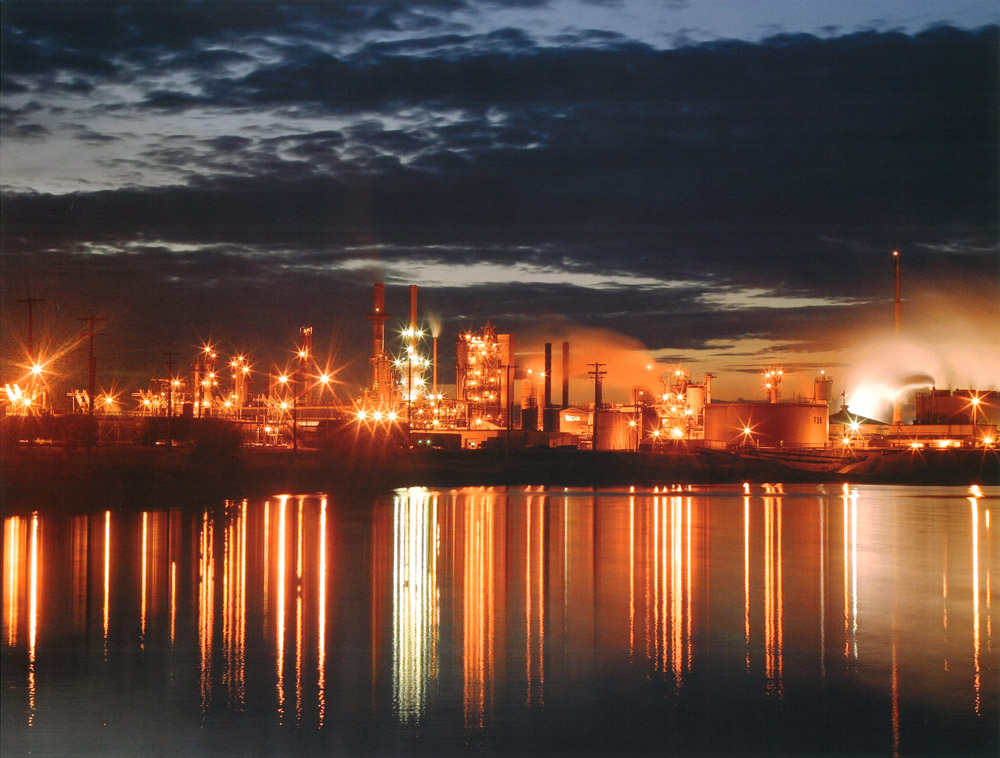
Mandan Refinery: More than 350 people are employed by Marathon in the Bismarck-Mandan area and western North Dakota. Photo courtesy of Marathon Petroleum.
- Because oil is a commodity – an important, basic good that is bought and sold on the market – the industry can be greatly affected by prices.
- Oil prices fell in early 2016 because over-production of oil around the world caused too much supply, and oil wasn’t as in demand as before.
- Oil prices in July 2008, at the peak of the boom, were $133.48 per barrel. Oil prices in February 2016 were $39.26 per barrel.
- In 2022 the price of oil ranged from $80 to $122 per barrel.
- Because oil companies are using more efficient technology, they are able to keep producing oil, but not as much as they were before prices dropped.
- Even though the oil and gas industry in North Dakota has slowed down, it still provides employment for thousands of people.
- The unemployment rate in North Dakota is one of the lowest in the nation.
- 2.3% in 2022
- About 30,000 people work in the oil fields of western North Dakota.
- Wages are higher in parts of North Dakota than in most other states.
- The unemployment rate in North Dakota is one of the lowest in the nation.
- North Dakota’s oil and gas boom also brought challenges.
- Because of all the workers moving to western North Dakota, there were housing shortages.
- Some of the workers lived in campers and other temporary housing.
- Water supplies, sewage systems, and government services are were strained in oil patch regions.
- There was a shortage of hospitals and doctors because the population has increased.
- Prices went up on rent, products, and services.
- Many businesses are having difficulty finding enough workers because of the low unemployment rate.
- Because of all the workers moving to western North Dakota, there were housing shortages.
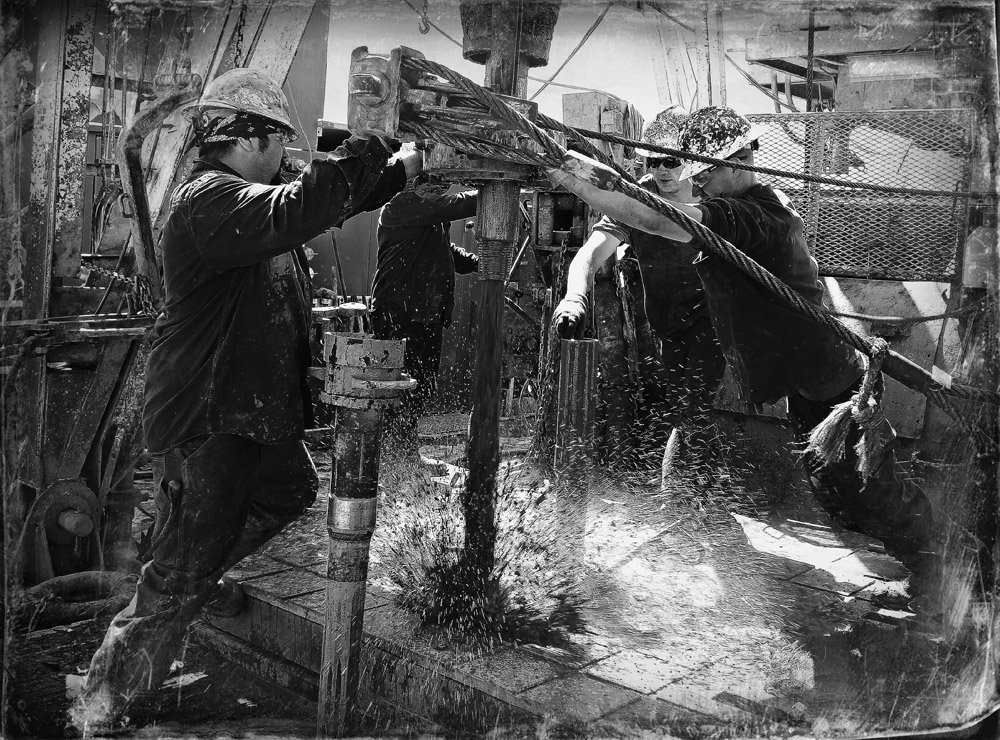
Rig Floor Operators: Rig floor operators (also known as roustabouts) handle operations on a drilling rig. Photo courtesy of Whiting Petroleum.
- In spite of the challenges, the increase in the oil and gas industry has opened up career opportunities for young people in North Dakota.
- By the year 2020, the state could see a peak of 100,000 well-paying jobs related to the oil and gas industry.
- The oil and gas industry offers a higher average industry wage at every level, compared with all other industries.
- Energy courses and training programs are offered at several North Dakota colleges and universities including those at Bismarck, Minot, Fort Yates, Devils Lake, Wahpeton, Fargo, Grand Forks, and Williston.
- Drilling new oil wells, building pipelines, constructing housing, and creating more businesses will continue to bring opportunities to the people of North Dakota far into the future.
- By the year 2020, the state could see a peak of 100,000 well-paying jobs related to the oil and gas industry.



